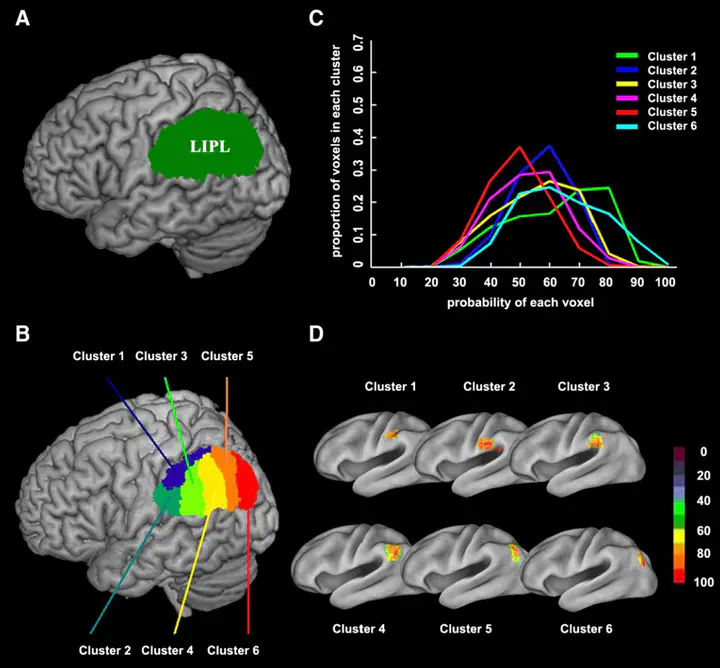 LIPL parcellation results
LIPL parcellation resultsAbstract
The inferior parietal lobule (IPL) is a functionally and anatomically heterogeneous region. Much of the information about the anatomical connectivity and parcellation of this region was obtained from histological studies on non-human primates. However, whether these findings from non-human primates can be applied to the human inferior parietal lobule, especially the left inferior parietal lobule, which shows evidence of considerable evolution from primates to humans, remains unclear. In this study, diffusion MRI was employed to investigate the anatomical connectivities of the human left inferior parietal lobule. Using a new algorithm, spectral clustering with edge-weighted centroidal voronoi tessellations, to search for regional variations in the probabilistic connectivity profiles of all left inferior parietal lobule voxels with all the rest of the brain identified six subregions with distinctive connectivity properties in the left inferior parietal lobule. Consistent with cytoarchitectonic findings, four subregions were found in the left supramarginal gyrus and two subregions in the left angular gyrus. The specific connectivity patterns of each subregion of the left inferior parietal lobule were supported by both the anatomical and functional connectivity properties for each subregion, as calculated by a meta-analysis-based target method and by voxel-based whole brain anatomical and functional connectivity analyses. The proposed parcellation scheme for the human left inferior parietal lobule and the maximum probability map for each subregion may facilitate more detailed future studies of this brain area.